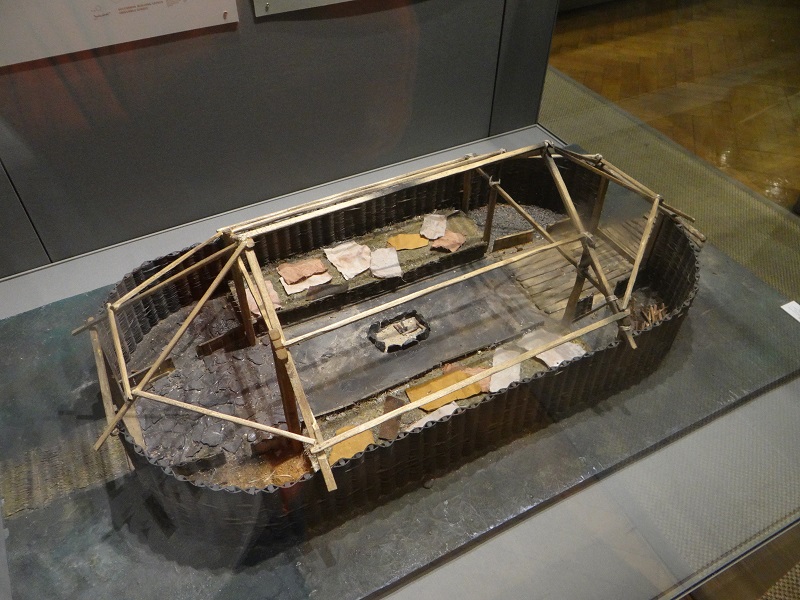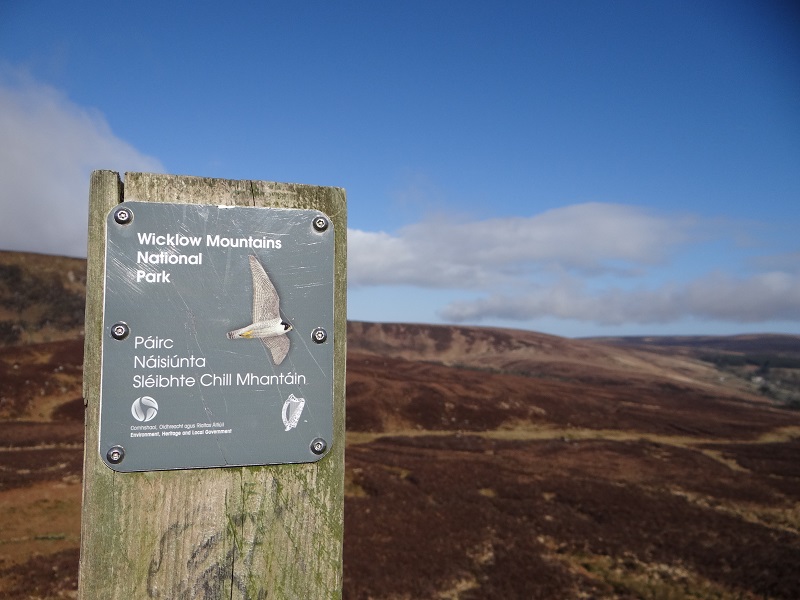Viking Sites to Visit in Ireland:
- Waterford: Reginald's Tower
- Dublin: National Museum of Ireland, Archaeology Building, "Viking Ireland" Exhibition
- Dublin: "Dublinia" living history museum of Viking (and Medieval) era Dublin
- Wicklow Mountains: "Vikings" tv show filming locations
- Glendalough monastic site; target of many Viking raids
The Arrival of the Vikings in Ireland
The first documented Viking raids in Ireland began in 795 AD, when Monasteries were targeted for their wealth and inhabitants who could be captured and sold off as slaves. Eventually, the Vikings started sticking around and you see towns like Waterford, Dublin, Limerick, Cork and Wexford established – all on major waterways. They remained relatively limited in their expansion, mainly due to the decentralized political system and scattered kingdoms and territories in Ireland compared to England of France, where more centralized, small group of leaders could be overwhelmed and vast territories captured.
Once settled in, the Vikings started acting more neighborly, knowing they couldn’t keep raiding without fear of retaliation and attack themselves. They began to trade with the local Irish, who would not have had access to the types of goods the Vikings could get through their vast networks in Europe, and even established the first mint and the use of coinage instead of bartering. The Vikings also began to intermarry with the Irish and form bonds with regional kingdoms; their battle skills were no doubt a major selling point for a local king looking to score a resourceful son-in-law!
One outcome of this is that you would sometimes see Vikings fighting other Vikings. For example, at the Battle of Clontarf in 1014 AD Irish High King Brian Boru had allied himself with the Vikings of Waterford to defeat the Vikings of Dublin and halt future Viking expansion. Eventually the Vikings were pretty much fully assimilated to Irish culture.
When the Normans arrived in the late 11th and 12th centuries, they recognized the strategic positioning of the Viking settlements and quickly went to work upgrading, fortifying and expanding them to reinforce their positions. When looking for Viking sites to visit in Ireland, know that some may look Norman today but the original site was likely settled by Vikings!
Post Sources:
[bg_collapse view=”link” color=”#4a4949″ icon=”arrow” expand_text=”Show More” collapse_text=”Show Less” ]
Wilson, A (2014). Birkett, T; Lee, C (eds.). The Vikings in Munster (PDF). Languages, Myths and Finds (series vol. 3). Centre for the Study of the Viking Age, University of Nottingham. pp. 20–32.
Wikipedia. (2021, May 2). Reginald’s Tower.
Visit Wicklow tourism website. Accessed 16 May 2021.
“Globetrotting Vikings: The Raiding of Ireland” history.com (2018). Accessed 16 May 2021.
[/bg_collapse]
Reginald's Tower, Waterford
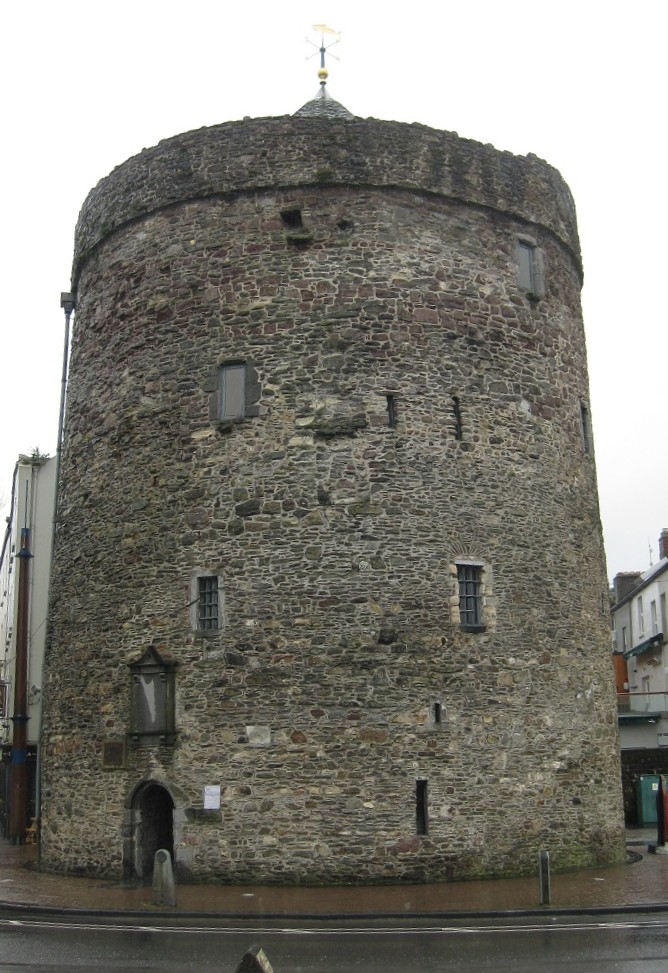
Waterford was established at confluence of two rivers, the River Suir and John’s River, which created natural protection. The area today is known as the “Viking Triangle”. Of the Viking sites you can visit in Ireland, the Triangle is a great place to start. Reginald’s Tower, pretty much at the apex of the triangle, has a lot of great information about the time of the Vikings in Ireland.
Believed to have been named for a Viking leader (Reginald is the Anglicized version of the Norse name “Ragnall”), the original Viking tower would have been wooden; Normans realized the importance of the site and rebuilt the tower in stone in the 12th or 13th century and two additional floors were added in the 15th century.
Today the tower houses a great exhibition on Viking Waterford. Make sure to see if you can spot the cannonball lodged outside; legend says it is a remnant of Oliver Cromwell’s siege in 1650 AD.
I had no trouble finding public parking in Waterford; lots are well signed and payment is easy. Waterford also has an airport (WAT) and is also accessible by bus and train. It’s a very walk-able city as well.
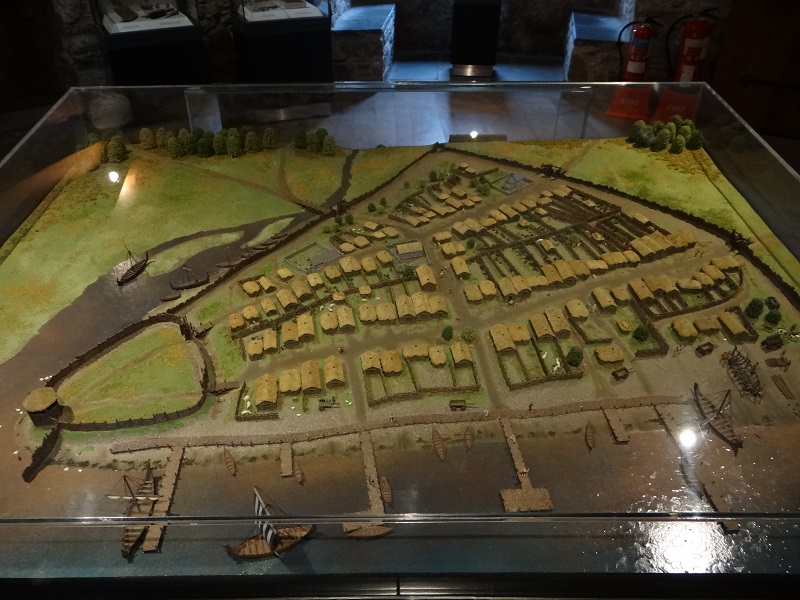
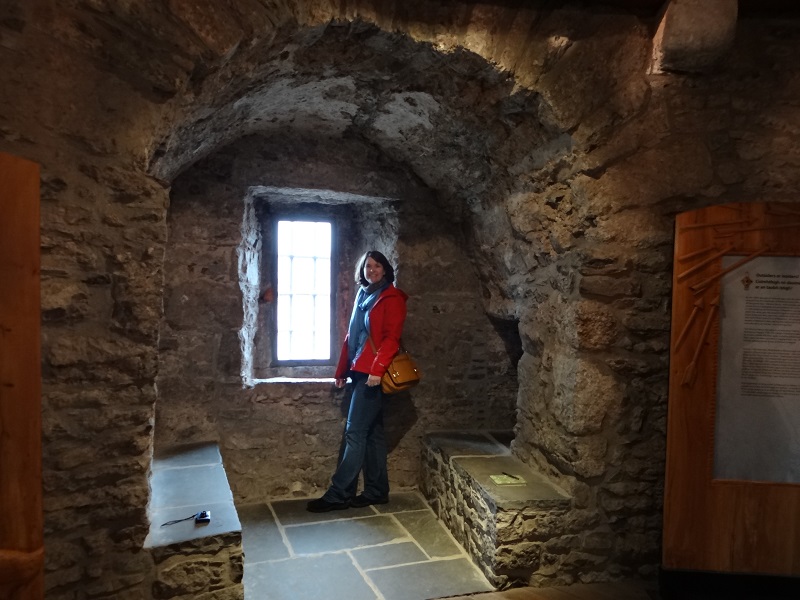
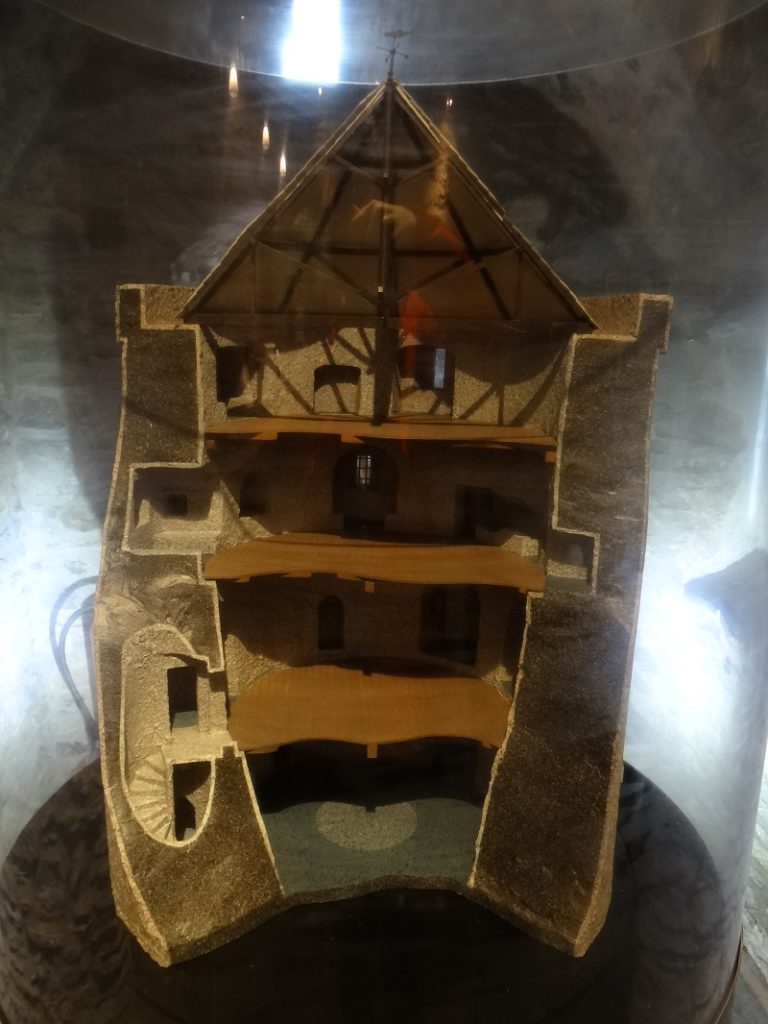
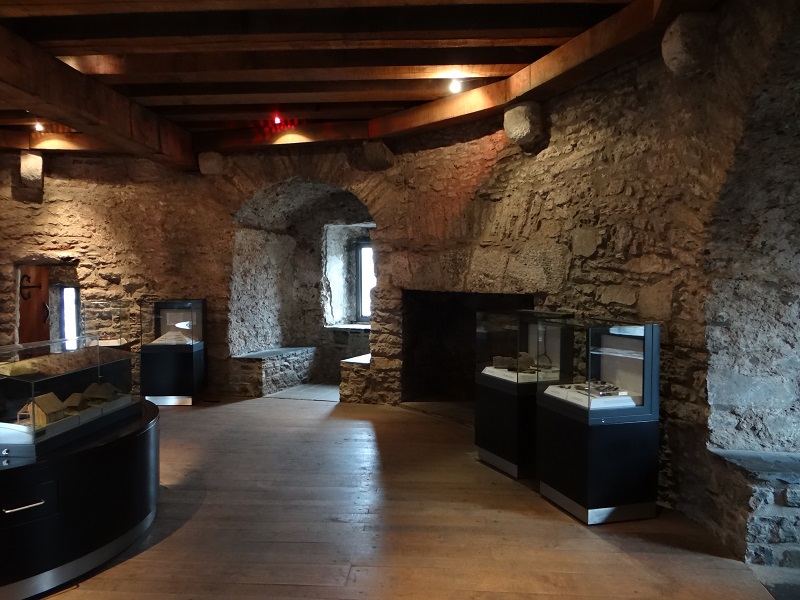
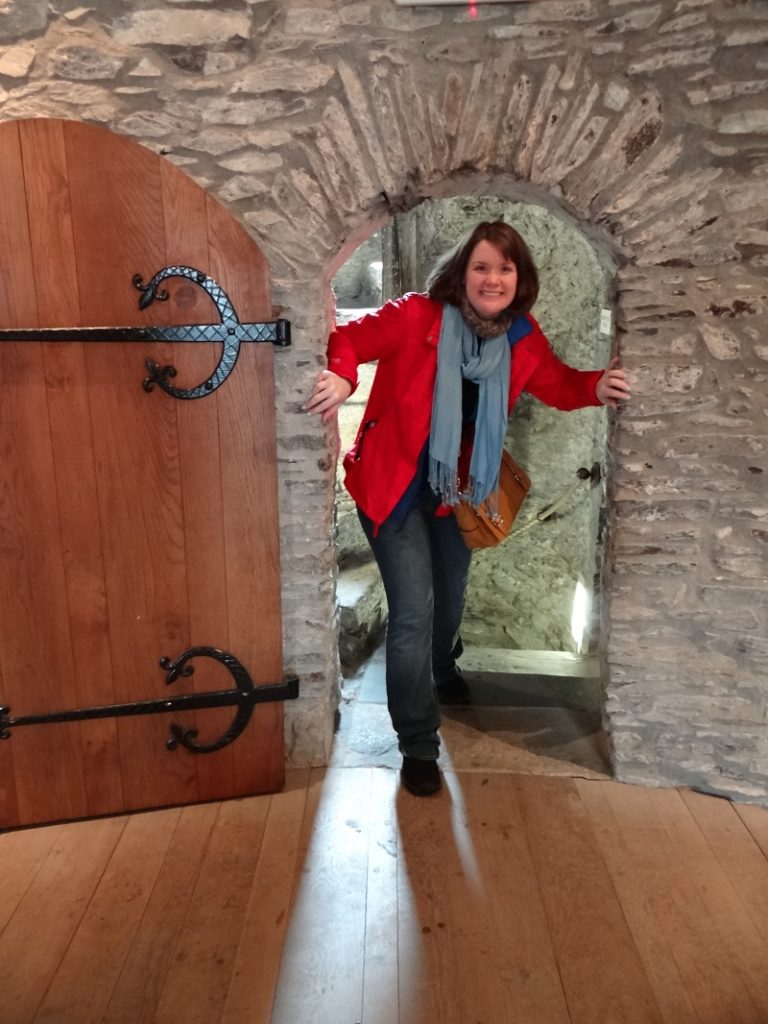
In the Viking exhibition, you can find a model Viking home, which shows a long, rectangular structure with doorways at each end. The fire would be located in the middle of the building with a smoke-hole in the roof to let the smoke escape. I believe chimneys would come later with the Normans and multi-story buildings that could no longer use roof smoke-holes.
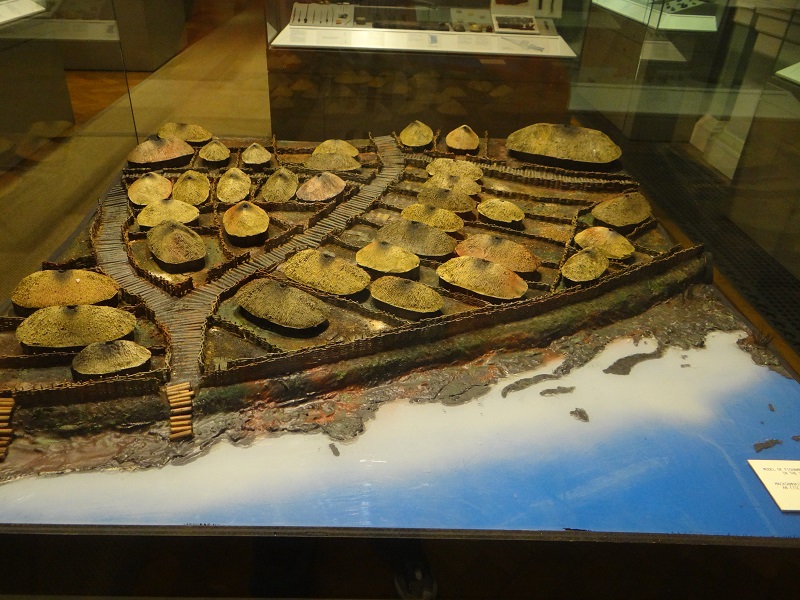
I have not visited this site specifically myself, but I’ve been to other “Living History” museums and they can be fun, especially for families.
They advertise the sights, sounds and smells of Viking-era Dublin with interactive exhibits and costumes you can try on to get in the spirit.
Several bus lines stop nearby, and the Luas light rail tram red line Four Courts stop is reportedly a 7 minute walk. By train, it’s about halfway between Heuston or Tara St Stations; about 15 minutes walk from either.
This one’s for fans of the tv show “Vikings”, which used several locations in Ireland as a Scandanavian stand-in. I think that still counts towards Viking sites to visit in Ireland!
One of the main sites for filming was in the Wicklow Mountains, about an hour south of Dublin. The Wicklow Mountains National Park is a beautiful area; even in March when I visited and not much was green yet! It is such a rugged part of the country, I highly recommend a visit even if you aren’t looking for where the show is filmed.
Alternatively to a self-guided trip, there are some tour companies that run day trips from Dublin, or you can head to Lough Tay yourself to see the location for the fictional “Vikings” town of Kattegat.
Glendalough
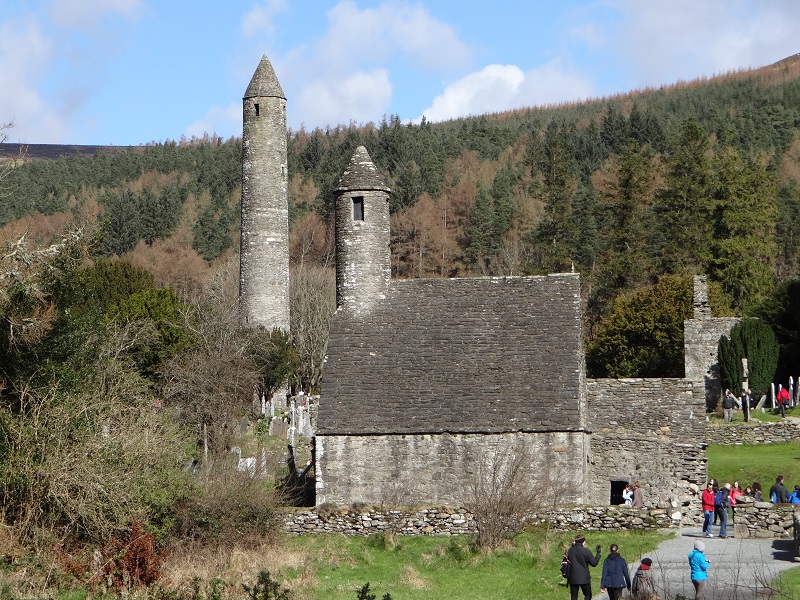
St. Kevin founded an early monastic site at Glendalough in the 6th century and by the 9th century it was a significant site, which is a sure way to draw the attention of Viking raiders.
An excellent round tower remains standing, and it’s easy to see how monks would have used it as a look-out to spot Viking trouble coming in from a distance as well as serve as a safe location to stash treasure and wait out the Viking raid. More than 80 of these towers are known to have been built all over the country.

